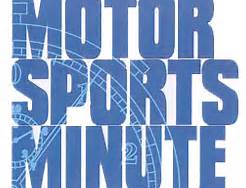Kyle Busch Fastest Nationwide Driver At Indy
- Updated: July 26, 2012
Speedway, Ind., July 27-The NASCAR Nationwide Series cars made their debut on the Indianapolis Motor Speedway Thursday afternoon with two practice sessions Saturday’s Inaugural Indiana 250 and Kyle Busch placed himself at the top of the list in both sessions. Busch’s lap time of 51.184 seconds in the final session was four-tenths of a second quicker than brother Kurt Busch’s second fastest time of 51.517 seconds, a rather significant gap on the 2.5 mile historic oval. Kasey Kahne posted the third best time in the final practice session while 2006 Indianapolis 500 winner Sam Hornish Jr. turned in the fourth fastest time in his return to the Brickyard. Denny Hamlin ended the final practice session in fifth place just ahead of defending Brickyard 400 winner Paul Menard in sixth. 43 of the 46 cars entered for the Indiana 250 took to the speedway on Thursday.

-
The new 2013 NASCAR Nationwide Series Camaro. (Photo credit: Chevrolet)
In other developments, Chevrolet announced its new entry in the NASCAR Nationwide Series for the 2013 season will be the Camaro.
“Our team of Chevrolet designers and aerodynamic engineers did a fantastic job capturing the great looks and styling cues of the production Camaro, while providing our NASCAR Nationwide teams with a highly competitive aero platform, ” said Pat Suhy, manager, Chevrolet Racing Oval Track Group.
The introduction of the Camaro to the Nationwide Series in 2013 will give the series a “pony car” persona as it competes alongside the Ford Mustang, Dodge Challenger, and Toyota Camry which should help the NASCAR Nationwide tour form its own unique identity.
There’s talk floating around that NASCAR is seriously looking at eliminating the guaranteed starting positions currently afforded to the top 35 owner’s points positions and returning to the traditional method of taking the top 38 cars on time with allowance for provisional starting positions, including a Past Champions provisional. The current system came about in light of discussion regarding franchising teams and giving existing owners some value in their investment but never resonated well with the fans. Additionally the Top 35 rule opened up the door for complex dealings where car numbers and essentially starting positions were bought and/or traded to guarantee sponsors and in some cases, drivers, starting spots in major events. A return to a simpler system that starts the fastest 38 cars while at the same time allows teams a certain number of provisional spots to use in the event of unfortunate circumstances should be popular with the fans and will add needed drama to qualifying sessions.


![Jimmie Johnson salutes beforehand. [Joe Jennings Photo]](https://racingnation.com/wp-content/uploads/2016/11/161120NSCa-48-5123-300x195.jpg)


![Porsche Fabcar crosses the finish line. [Robert Madara photo]](https://racingnation.com/wp-content/uploads/2023/11/FabcarFinish-108x70.jpeg)

![USF2000 Pro driver Lindsay Brewer. [Eddie LePine Photo]](https://racingnation.com/wp-content/uploads/2023/06/IMG_8825_2-108x70.jpg)